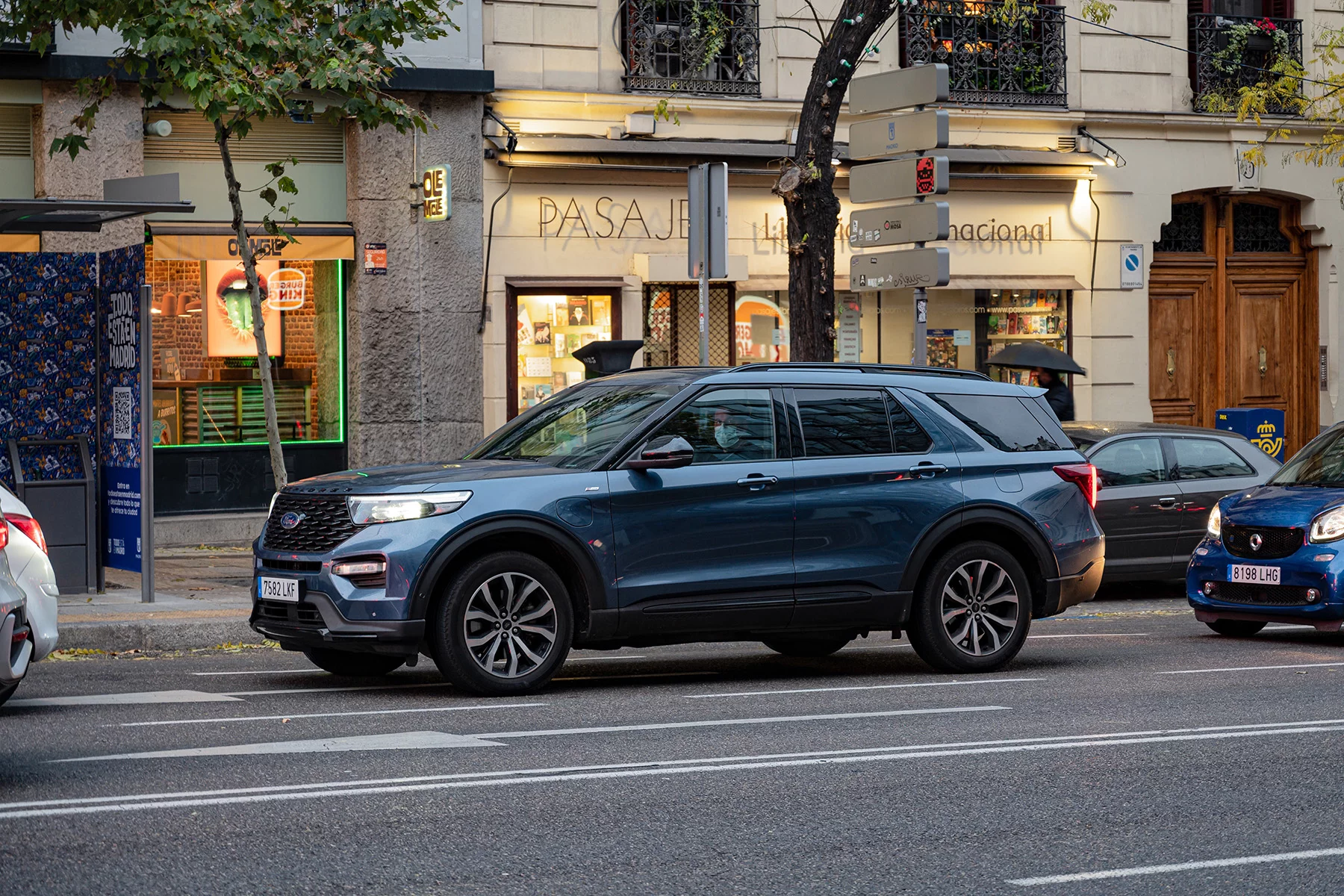Getting your driver’s permit in Spain is very straightforward. You’ll need to know the rules of the road, pass a driving and medical test, and bada bing, you’re golden. And if you already have a foreign driving license, you can likely exchange it for a Spanish one without too much fuss.
Let’s dive in:
- Driving licenses in Spain
- How to get a Spanish driver’s permit
- Driving lessons in Spain
- Driving tests in Spain
- Before getting on the road
- Can you drive with a foreign license in Spain?
- How to exchange a foreign driver’s permit in Spain
- Renewing a driving license in Spain
- What if your permit is damaged, lost, or stolen?
- Driving licenses for other vehicles in Spain
- Can you lose your driver’s license?
- Useful resources
Translayte
Do you need an official document, like your driver’s license, translated quickly? Translayte is here to help with fixed translation pricing, speedy delivery, and 130 offered languages. Order online now with Translayte’s 24/7 customer support and relieve some of the stress of driving abroad.
Driving licenses in Spain
Spain uses the standard EU driving license (carnet de conducir) that is valid across all member states and countries in the European Economic Area (EEA – Iceland, Liechtenstein, and Norway).
This is a pink credit card-style permit and states your personal details, the type of vehicle you’re allowed to drive, and the license issue and expiry date. They typically are valid for 10 years, depending on your age, license category, and medical record.

On the front of the card, you’ll find the following:
| Number on the license | What it means |
| 1 and 2 | Your full name |
| 3 | Your date and place of birth |
| 4a and 4b | The issue and expiry date of the license |
| 4c | The issuing authority |
| 5 | Your license number |
| 7 | Your signature |
| 9 | Your license category (e.g., B for cars) |
The back of the license contains a table with information on the different driving categories. Spain has four broad categories, including:
- A – mopeds, motorcycles, and motor tricycles
- B – personal cars, other light vehicles, and quad bikes
- C – trucks and large vehicles weighing above 3,500kg
- D – passenger transport vehicles such as buses and mini-buses
Spanish driver’s permits are issued by the Directorate-General for Traffic (Dirección General de Tráfico – DGT). This agency is part of the Ministry of the Interior (Ministerio del Interior – MIR).
Expats with a foreign driving license are allowed to drive in Spain. However, after six months of living there, they’ll need to exchange it for a Spanish one, depending on their nationality.
How to get a Spanish driver’s permit
You must be 18 to drive a car in Spain. If you are over 20, you can go for your motorcycle license. Of course, you must also pass the theory and practical driving tests. If you live with a disability or learning difficulty, you can apply for a special license (accesibilidad en el permiso conducir) and get support around meeting requirements.

With the tests out of the way, you can apply in person at a local DGT office or online at the Registro Electrónico General (REG). You’ll need to submit the following:
- Valid passport or ID
- Proof of residence (e.g., a residence permit) – you must have been in the country for at least six months
- A passport photo in color (talón-foto)
- Completed fitness application form (in Spanish)
- Medical certificate from an Authorized Driver Recognition Center (valid for 90 days)
A new driving license costs €94.05 (2024). This fee is only for the permit and exams, though; you’ll also need to budget for driving lessons. If you go through a driving school, you often pay for a standard package that includes many of the costs and administration.
You should receive your license within six weeks. Until that point, you will get a provisional license (carnet provisional) that is valid for three months and only within Spain.
Costs of driving licenses in Spain (2024)
According to Spain’s Consumer watchdog OCU (Organización de Consumidores y Usuarios), people pay an average of €665–1,482 for their driver’s license in 2024. This price can vary, of course, depending on the location, driving school, number of lessons, number of exams, and more.
Typical costs you will need to take into account:
- School registration fees: €200–600
- Driving lessons: €15–50 per lesson
- Medical certificate: €25–50
- Tests and license: €94.05

Some autonomous communities, municipalities, and cities offer financial aid (ayuda) to low-income residents looking to get their driving license. For example, until the end of 2025, Madrid grants €600 to (unemployed) workers who want to obtain their C, D, or C+E category permit.
You should check your municipality’s website to see what’s on offer.
Driving lessons in Spain
Let’s rewind a bit. Before you can apply for a license, you’ll need to know how to drive.
Driving lessons aren’t compulsory, and you can choose to learn from anyone with a full driver’s permit. However, to make sure you’re not taught anything morally grey, it’s recommended that you go to a registered driving school (autoescuela) in Spain. The DGT recommends a minimum of 20–30 practice hours.
Driving instructors cover knowledge and key skills required for both practical and theoretical tests, including:
- How to operate and control your vehicle
- Awareness and road safety
- Knowledge of traffic rules and signs
- Vehicle maintenance
- What to do in the event of an accident
- Documentation to keep in your vehicle
Another advantage of driving schools is that they usually take care of the administration, including booking your tests and handling the procedures. Some also apply for your license once you have passed the exams.
The downside is that they can be expensive. You’ll need to pay school registration fees, ranging from €200–600 depending on the location. Driving lessons in Spain typically cost €15–40 per lesson, although it can go up to €50 in large cities. Again, there is no legal minimum number of required classes. That said, many schools operate on a minimum number of ten lessons.

Where to find a driving school
You can find reputable driving schools and instructors (profesores) on the DGT website. Some schools offer lessons in English; it’s good to check the availability beforehand.
Top Spanish driving schools that cater to expats include:
- Autoescuela Corsa in Barcelona
- Autoescuela Goya in Madrid
- Autoescuela Lara in Madrid
- Autoescuela Baliza in Sevilla
- Autoescuela Ronda Sur in Valencia
Driving tests in Spain
Driving theory and practical exams in Spain are administered by the DGT. The minimum age for the theory test is 17 and nine months. You’ll also need a psychophysical aptitude report (i.e., medical certificate) from a Driver Recognition Center (Centro de Reconocimiento de Conductores).
Positive test scores are valid for two years. Exam fees include two tries in total; if you fail either test, you can retake it once for free. After that, you will have to pay for a new round.
In recent years, Spanish driving tests have become more difficult. Only 47.5% of novice drivers pass the practical one on the first attempt (2023). The DGT estimates that more than 96% of current drivers would not pass the driving test if they had to undergo the theoretical test at this time.
Spanish driving theory tests
The driving theory exam (examen teórico) takes place in person at your local Provincial Traffic Headquarters (Jefatura Provincial de Tráfico) or an exam center. You can book a test date, time, and place on the DGT website. You can also select whether you want to take the test in Spanish, English, French, German, or any autonomous co-official language (e.g., Catalan in Catalonia).
Tests are conducted digitally at the test center. The multiple-choice exam takes about 30 minutes and asks 30 questions. You must get 27 correct answers to pass the test. The DGT also provides options such as extra time or guided tests for people with certain disorders or disabilities.

Results are published on the DGT website within two weeks. After passing, you have two years to complete the practical test and get your driver’s permit.
Practical driving exams in Spain
You can take the practical test at age 18 and after clearing the theory exam. Most of the time, your driving school will book a test date for you. You’ll have to authorize your school to schedule an exam and pay the fee on your behalf. If you don’t go through a school, you can also request the exam yourself on the DGT website.
The length of the test can vary but usually lasts around 25-40 minutes. The examiner assesses your driving and maneuvers that cover 15 key subject areas.
You can do your test in your own car or in that provided by your driving school. In some cases, one other person, such as your driving instructor or translator, will be allowed to accompany you during the exam. Afterward, the examiner will tell you whether you’ve passed and discuss your result.
If you fail the test on your first attempt, you can re-apply after 10–15 days. The practical test can be repeated as many times as necessary.
Before getting on the road
You must take out third-party liability car insurance (seguro de coche) before you can drive in Spain. Additional motor vehicle insurance that covers you for theft, vandalism, or collisions with animals is optional.
Can you drive with a foreign license in Spain?
If your driver’s permit was issued by an EU or EEA country (European Economic Area – Iceland, Liechtenstein, and Norway), you can continue using it until it expires. For driving licenses without an expiration date or a date that is more than 15 years away, the maximum duration is two years. After that, you have to exchange it for a Spanish one.

Non-EU/EEA drivers can use their foreign permit for six months before having to exchange it. The six months start from the date you acquire normal residence in Spain.
Tourists and short-stay residents can use their foreign driving license, provided it has the A, B, C, and D categories used on European permits. If it doesn’t, it’s recommended that you get an International Driving Permit (IDP – permiso internacionalde conducir – PIC). These are valid for up to one year.
Expats moving to Spain and bringing a vehicle must register it with the DGT. Our article on Buying, importing, and selling a car in Spain explains the topic in more detail.
How to exchange a foreign driver’s permit in Spain
Expats will eventually need to exchange their foreign driving licenses for a Spanish one. You can do so by appointment with your local Traffic Headquarters. The cost of the permit itself is €28.87; the required documents cost depends on which country issued you your driver’s permit.
For example, Spain has treaties and exchange agreements with over 30 countries – including Algeria, Morocco, Moldova, Ukraine, and the UK – which allow for easy exchange. Expat residents from other countries – including Australia, Canada, South Africa, and the US – will need to pass the theory and practical driving tests to get a Spanish license.
After submitting your application, your foreign license will be sent back to your country of origin. You’ll be given a provisional driving license valid for six months and only in Spain. You should receive your full driver’s permit by mail within six weeks.

EU/EEA licenses
EU/EEA citizens can voluntarily choose to exchange their foreign permit for a Spanish one. You’ll need to provide:
- Completed application form (in Spanish)
- Valid ID (e.g., DNI or valid passport)
- If you’re an EU national, a certificate of registration in the Register of Foreigners
- If you’re an EEA national, a residence card
- Foreign driving license
- Current passport photo, in color
Non-EU/EEA licenses
Andorra, Japan, Korea, Monaco, and Switzerland
To exchange your foreign driver’s permit, expats from the above-listed countries must supply:
- Completed application form (in Spanish)
- Valid passport or ID
- If you’re from Japan, a translation and verification of your permit
- If you’re from Korea, an official translation of your permit
- Proof of residence (e.g., residence card)
- Foreign driving license
- Current passport photo, in color
- Medical report from a Driver Recognition Center (valid for 90 days)
Countries with an exchange agreement
You can see if your country has a treaty or exchange agreement with Spain on the DGT website.

To swap your category A or B license for a Spanish one, you’ll need to bring:
- Completed application form (in Spanish)
- Valid ID (e.g., DNI or passport)
- Proof of residence (e.g., residence card)
- Proof you didn’t live in Spain when you got your foreign license:
- Spanish citizens must provide a Certificate of Registration and Consular Leave issued by the Spanish Embassy of the country that produced their driver’s permit
- Non-Spanish citizens must provide:
- Residence, student, or EU-family residence card
- Certificate of registration in the Register of Foreigners
- If you don’t have a DNI, your Aliens Certificate
- Foreign driving license
- Current passport photo, in color
- Medical report from a Driver Recognition Center (valid for 90 days)
- If your license is from Argentina, a certificate of the authenticity and age of your permit issued by the municipality that produced your driver’s permit
Drivers looking to exchange their foreign category C or D licenses may need to retake one or both of the driving exams. You can find more information on the DGT website.
Counties without an exchange agreement (e.g., the US)
Expats with driving licenses from countries without treaties or agreements cannot exchange their permits in Spain. You’ll need to take the theory and practical driving tests and – basically – earn yourself a new license.
Renewing a driving license in Spain
If your license is about to expire or you want to add another vehicle category, you’ll need to renew your permit. The validity of driver’s permits in Spain depends on the category, your age, and your medical history:
| License holder | Category | Valid for |
| Aged 18-65 | A and B | 10 years |
| Aged 18-65 | C and D | 5 years |
| Aged 65+ | A and B | 5 years |
| Aged 65+ | C and D | 3 years |
| Serious health condition | A and B | 5 years |
| Serious health condition | C and D | 3 years |
When you renew your driving license, you will first receive a provisional permit valid for six months and only in Spain. Your full permit will arrive in the mail within six weeks.
License renewal costs €24.58 plus the medical exam fee. Drivers aged 70+ can renew for free and only pay the medical fee.
Spanish licenses
You can renew driving permits up to three months before the expiration date. There’s no deadline for license renewal; however, if it’s expired, you’re not allowed to drive in the meantime.

For license renewals, you must pass a new psychophysical aptitude test at a Driver Recognition Center. The center will either renew your permit for you or issue a report. If it’s the latter, you can take it to your local DGT office (by appointment!) and renew your license there. In both cases, you must bring your existing driver’s permit.

Writer
Gary Buswell
Insider tip
Note that you cannot renew a license with no points left on it. Instead, you’ll need to apply for a recovery.
EU/EEA licenses (excl. Spain)
You can renew driving permits up to three months before the expiration date. Make sure you start the renewal process before your license is set to expire; the DGT can only renew valid driving permits.
EU/EEA driving licenses may be renewed by appointment at your local Traffic Headquarters. You’ll need to provide:
- Completed application form (in Spanish)
- Valid passport or ID
- Proof of residence and tax address (Impuesto de Actividades Económicas – IAE)
- Medical report from a Driver Recognition Center (valid for 90 days)
- Foreign driving license
- Current passport photo, in color

Non-EU/EEA licenses
Driving licenses from outside the EU/EEA region cannot be renewed in Spain. Instead, you may wish to get or exchange it for a Spanish permit.
What if your permit is damaged, lost, or stolen?
Make sure to report stolen licenses to the police.
If your driving permit is damaged, lost, or stolen, you can apply for a replacement at the DGT. You can do so in person, by phone, or online, by providing:
- Completed application form (in Spanish)
- If damaged, your existing permit
- If lost or stolen, a valid passport or ID
- Current passport photo, in color
The DGT will then block the existing license and issue a new one. The cost of a replacement permit is €20.81 (2024). Again, you will first receive a provisional permit, with the full replacement license arriving within six weeks.
Driving licenses for other vehicles in Spain
You can get a driver’s permit for the following categories:
| License category | Permitted vehicles | Minimum age |
| AM | Mopeds with 2 or 3 wheels and light ATVs | 15 |
| A1 | Light motorcycles | 16 |
| A2 | Medium motorcycles | 18 |
| A | Motorcycles of any capacity and tricycles | 20 (21 for a tricycle) |
| C | Light trucks > 3,500 kg | 18 |
| C1 | Light trucks > 3,500 kg | 21 (18 for professional drivers) |
| D | Buses transporting 8+ people | 24 (some exceptions made for professional drivers) |
| D1 | Buses transporting 8-16 people and a trailer | 21 (18 for professional drivers) |
| LCM | Reduced mobility vehicles | 14 |
| LVA | Agricultural vehicles | 16 |
Can you lose your driver’s license?
Similar to many other countries, Spain has a points system to monitor driver performance and improve road safety.

In general, drivers start out with 12 points. You can lose points for traffic violations (e.g., tailgating or causing an accident) and gain them if you go three years without any infractions. Drivers can have 15 points in total.
If you lose some of your license points, you can take a recovery course to get them back. Each class will earn you up to 6 points; you can take a course every two years (every year for professional drivers).
Drivers who lose all of their points receive a temporary driving ban. You’ll have to do a recovery course and pass a theory exam to get your driving permit back. You’ll then start out with eight points. Drivers who go two years without any infractions are elevated back to the full 12 points.
Beginner’s driving permit
Novice drivers will first get a beginner’s license, regardless of their age. This means that you’ll start out with eight points and face harsher punishments for traffic violations. If you go two years without any infractions, your license will receive the full 12 points.
Useful resources
- DGT electronic portal – official government e-portal where you can find more information on driving licenses and application procedures in Spain










